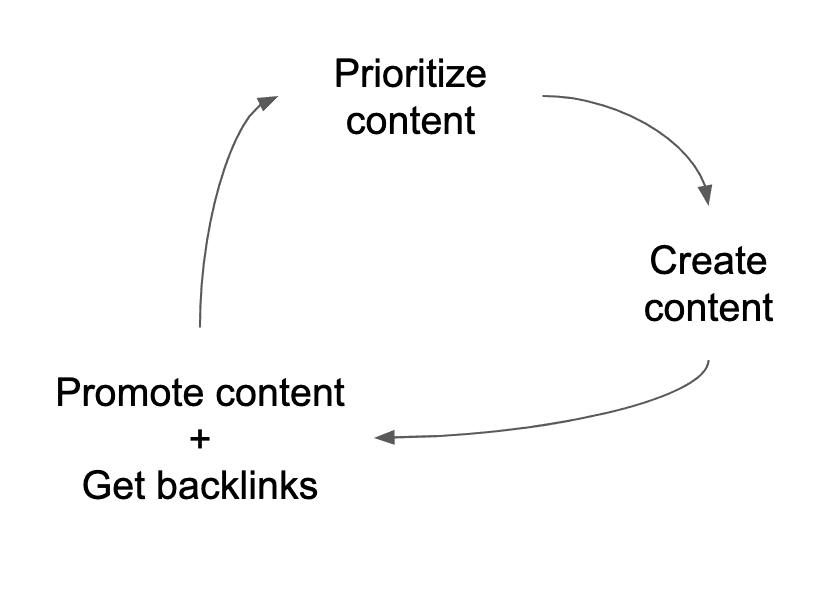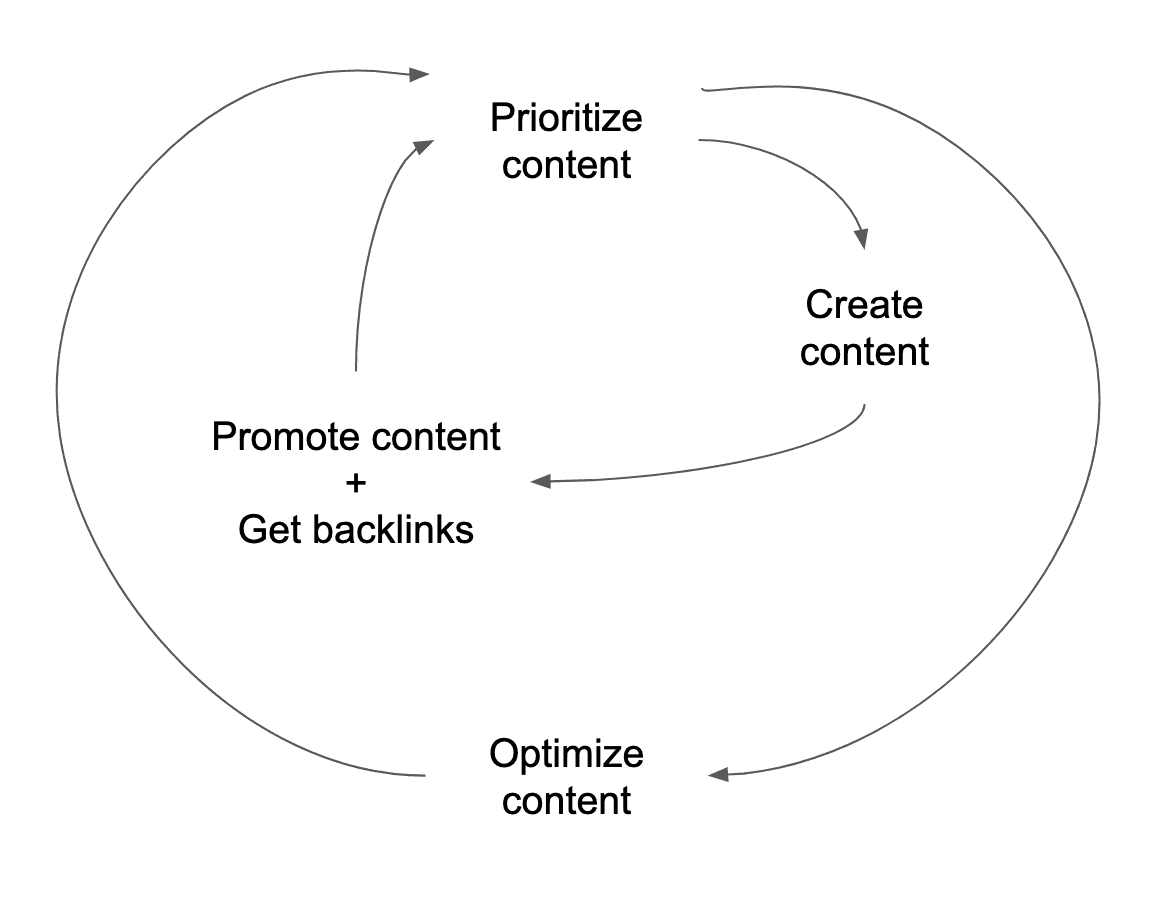How SEO Works: A Simple Model For Confused Marketers

There are zillions of excellent “ultimate guides” and epic resources describing how to do SEO, yet it is still confusing black magic to most marketers.
This post is my attempt at a simple model for understanding how SEO works.
It’s based on my experiences growing traffic at companies like App Annie, Pie (startup acquired by Google) and ReferralCandy. It’s then been further refined from what I see every day at HubSpot.
So, Why Should Google Give You More Traffic?
Okay, so you want something from Google: traffic. And more of it.
This is a good time to remember that whenever you want something from someone, a smart first step is to try and figure out their motivations and incentives.
So what does Google want?
And why would they want to give you traffic in the first place?
Breaking down the business model of Google Search reveals the answer to these questions:
- Google makes money from companies who place ads on Google Search
- Companies place ads on Google Search because everyone uses it
- Everyone uses Google Search because it’s helpful
- It’s helpful because Google is the best at giving the searcher what they want
Therefore, if you want to Google to give you traffic, you have to create content that gives their searchers what they want.
Happy searchers = more Search usage = more advertisers = more money for Google.
Make Google searchers happy and Google will reward you.
That’s a huge part of how SEO works.
Pick and Choose Which Searchers To Serve
But which searchers do you want to serve? All of them?
Of course not. To your business, some searchers bring more value than others.
You have limited time and resources. If you’re a basketball ecommerce store, you don’t want searchers who are interested in how to brew tea.
Therefore, if you want to be practical about how you’ll get traffic from Google, you have to prioritize the content you create.
And with that background, we can now start talking about our simple SEO model:
A Simple Model for Getting More Traffic from Google
If your goal is to get more traffic from Google Search, this is really all there is to it:

If you’re not getting consistent traffic, it’s because (a) you’re not executing one of the steps currently or (b) you’re skipping steps, creating a gap in the model.
Each of these is simple in theory, but takes years to master.
Below, I’ve given a short description along with some of the best content I’ve found for that step in the model.
Let’s now better understand each part of this simplified SEO model.
How To Prioritize Content For SEO
Imagine you’re opening a restaurant, and you’re choosing a location.
What should you do:
- Find a location that has lots of good foot traffic, like a big shopping mall or a busy business district
- Close your eyes and randomly choose a location on a map
Option 2 is how most people try to get traffic from Google: randomly guessing. Sure, you could get lucky, but most of the time you’re just going to be unlucky.
And this is why prioritizing content is so important in this model. The mere fact that you’re doing this step puts you above 95% of marketers who are trying to get more traffic from Google.
The key SEO skill here is keyword research. There are many excellent resources on this. Here’s some of my favorites:
- How to Do Keyword Research for SEO: A Beginner’s Guide (HubSpot)
- How To Do Keyword Research for SEO (Ahrefs)
- How To Do Keyword Research in 2019 (Nick Eubanks)
How To Create Content for SEO
Remember, your job is to give searchers what they want.
When creating content for SEO, this breaks down into two parts: getting and keeping the searcher’s attention.
How do you GET the searcher’s attention?
You have to understand the searcher better than your competition, then get good at writing headlines. There’s other content competing with you on the search results page, and you need to stand out.
How do you KEEP the searcher’s attention?
Once they’ve clicked onto your article, give the searchers what they’re looking for. Simple, but not easy. As you’re writing your content, compare yourself to the other results and make sure you’re giving the best, most satisfying, most informative answer. There’s a reason why Wikipedia pages rank so highly — they are awesome at keeping reader’s attention.
Read these:
- How the Hell Buffer Creates So Much Content So Quickly (Kapost)
- The Complete Guide: How to Identify Intent in Search (SEMrush)
- SEO Case Study: How I Increased My Organic Traffic 652% in 7 Days (Backlinko)
- 51 Headline Formulas To Skyrocket Conversions (And Where To Use Them) (Sumo)
- How We Grew Traffic to Ahrefs’ Blog by 1136% (and Got Thousands of Paying Customers) (Tim Soulo)
How To Promote Your Content & Get Backlinks
Most marketers think that they’re done after hitting “publish.”
Promoting your content & getting backlinks is possibly the most important step in the model.
Remember, you’re trying to get Google to send you more traffic. But before they do that, they have to trust you; sending their searchers to a bad webpage reduces their likelihood of using Google in the future, which means less money for them.
So how does Google know to trust you? One of the most important signals that Google uses to judge you how many other websites link back to your content.
And how do you get backlinks from other reputable, high quality websites? Well, you promote your content of course!
Content promotion and backlink building are art forms all in themselves, and there are many strong opinions on the “right” way to do them. That’s well beyond the scope of this article for a simple model of SEO, and so I will leave you with some of my favorite reads on this topic:
- Why Content Marketing Fails (Rand Fishkin)
- [Case Study] How We Ranked #1 for a High-Volume Keyword in Under 3 Months (Dmitry Dragilev)
- 9 EASY Link Building Strategies (That ANYONE Can Use) (Ahrefs)
- How to Get High Quality Backlinks in 2019 (7 New Strategies) (Backlinko)
- The GaryVee Content Model (Gary Vaynerchuk)
Okay, So that’s it right? Is that the whole model?
Sort of.
Strong execution of the Prioritize → Create → Promote loop will get you more traffic. But just doing that is not enough.
There’s a fourth part of the model, Optimize, which fits into it like so:

Think of the inner circle as your “short term” SEO strategy and the outer circle as part of your “long term” SEO strategy.
Because once you have some momentum with your SEO efforts, you’ll notice a few things:
A handful of content gets way more traffic than others.
Some content drives way more business than others.
You’ve published several posts that cover the same topic.
Your competitors have leapfrogged some of your content.
There’s been an update to the Search algorithm and your content stats have taken a hit.
At some point, you’ll have to do some SEO “house cleaning”, where you improve the performance of your overall SEO machine.
This could mean things as simple as fixing broken links and updating outdated content; making improvements to your keyword research process; or it could mean overhauling your entire website and restructuring how you organize your content.
Here are some excellent resources on this topic:
- Topic Clusters: The Next Evolution of SEO (HubSpot)
- Advanced Keyword Research: Four Tactics You’re (Probably) Not Using (Detailed)
- How QuickBooks Nearly Doubled Traffic by Deleting Half Its Content (Animalz)
Building On Your SEO Knowledge From Here
I am far from an SEO expert, but thinking of SEO in this way has helped me personally grow traffic at several companies, and has helped me advise other marketers who have gone on to do the same.
This model is imperfect. Show this post to any SEO expert and the first thing they might say is that it’s oversimplified. They would be correct. (I welcome all feedback — leave them in the comments)
My hope is simply to give confused marketers some kind of structure to think about SEO, which will give them a leg up in building on their own SEO knowledge.
You can also read my list on top SEO experts to follow here.